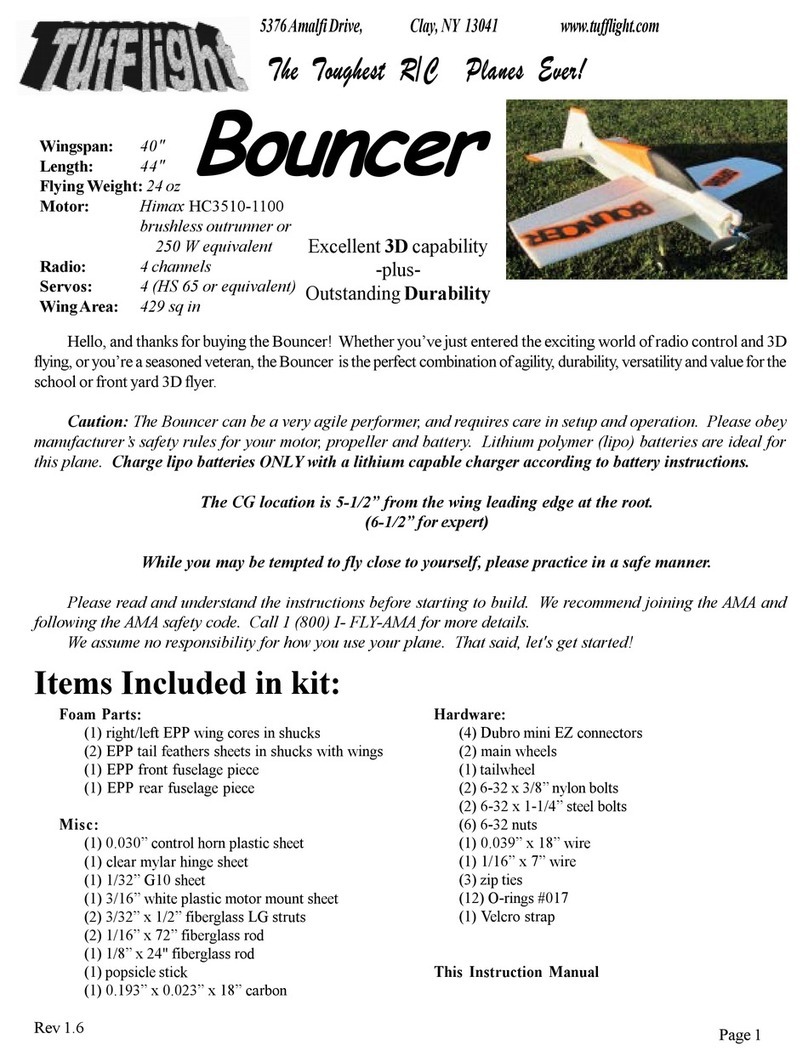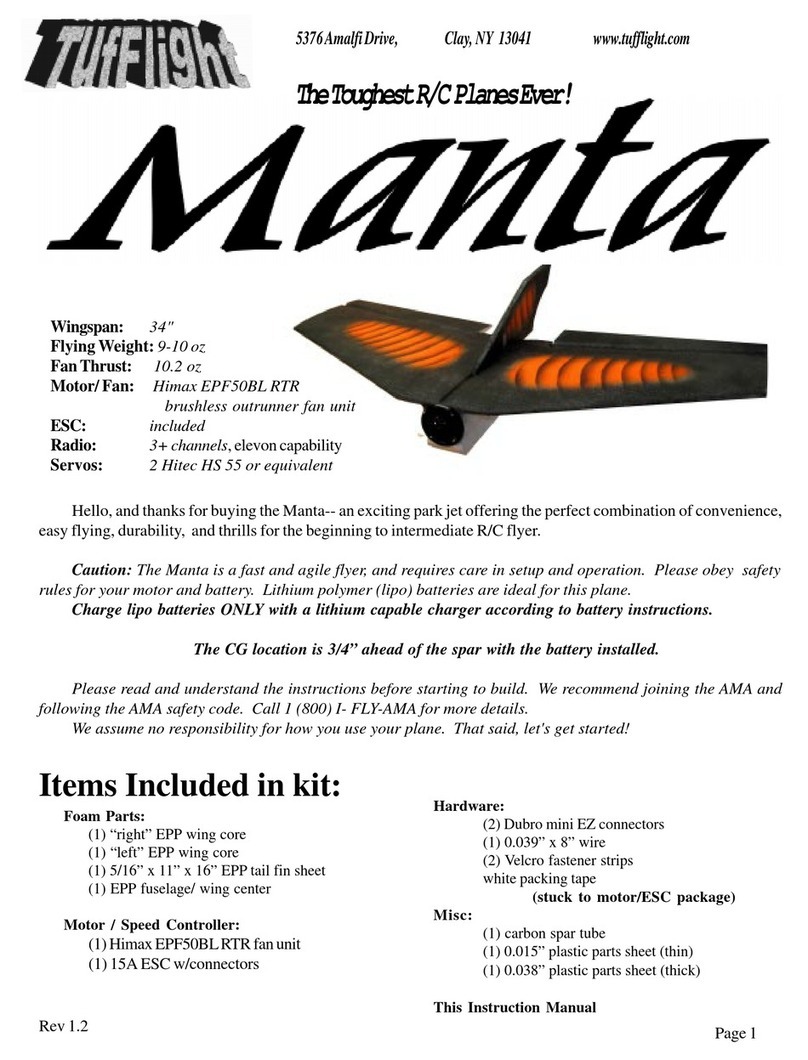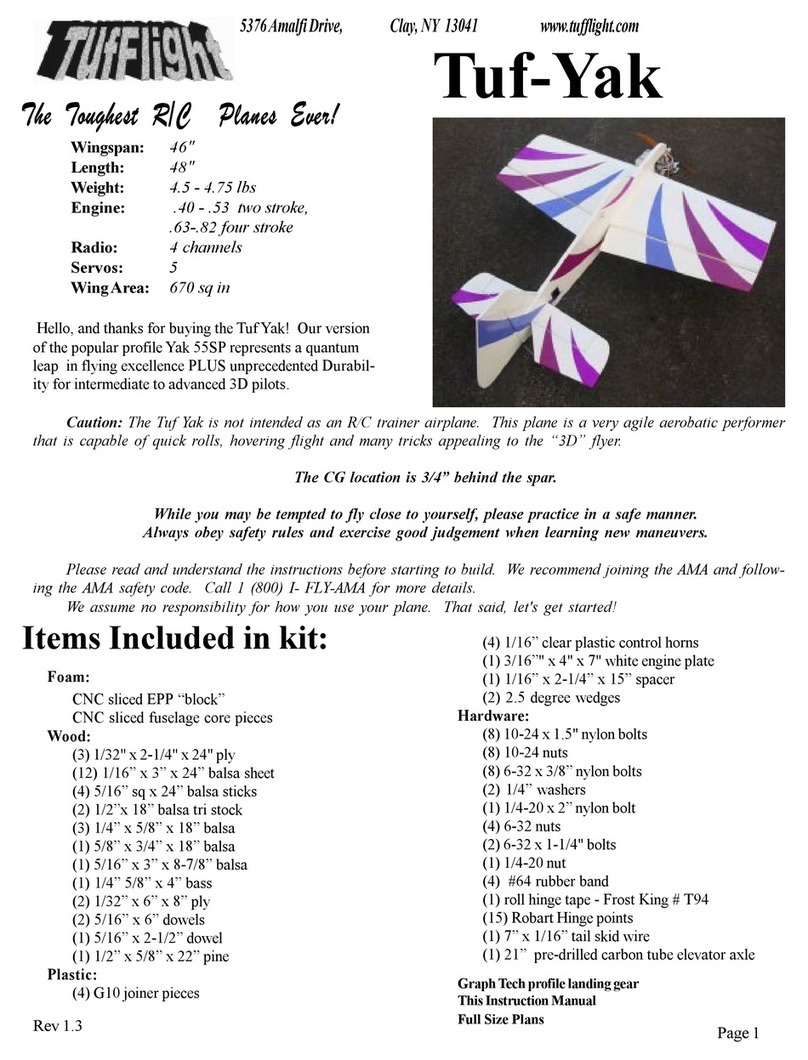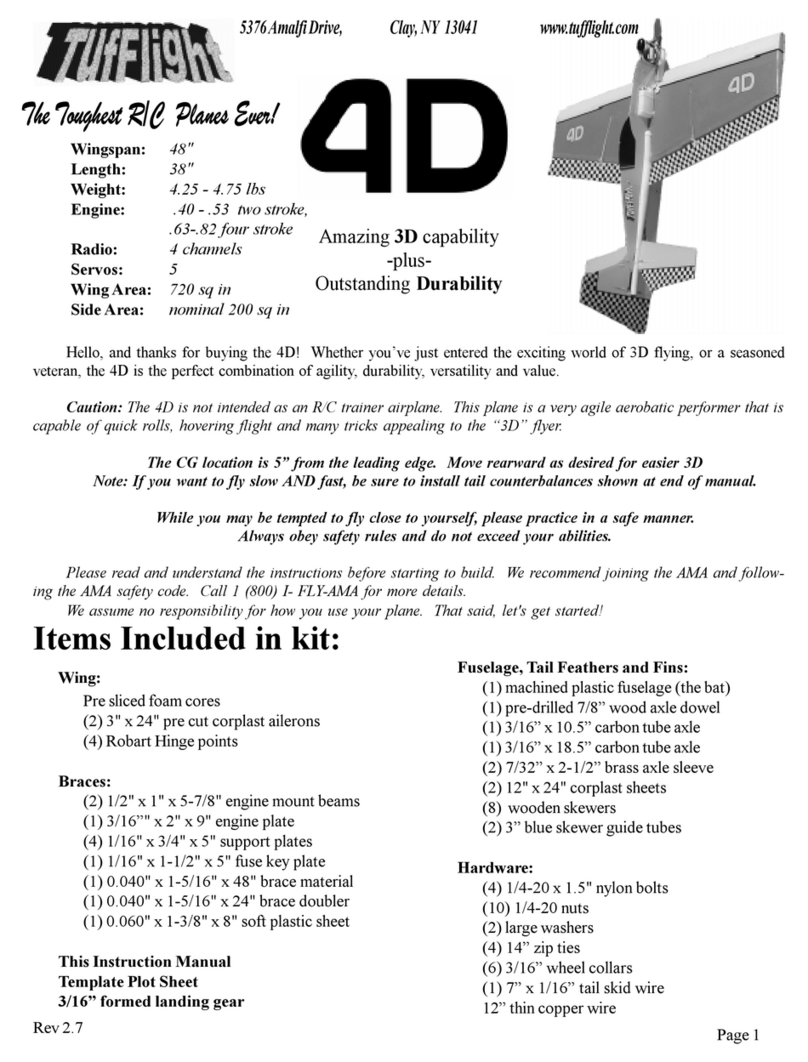
Page1
5376AmalfiDrive, Clay, NY 13041 www.tufflight.com
Items Included in kit:
Foam Parts:
EPPfuseblocksinshucks(Front,Rear, Middle)
wingcoresinshucks(right/left)
Wood / Plastic Parts:
3/16" balsa sheet
(2) pine blocks
5miltailskinlaminatingplastic(flexible)
10milwingskinlaminatingplastic(stiff)
10milLEwraplaminatingplastic(flexible)
(1)5mil thrust tube sheet
(1) 1/8" lasercut parts sheet(intake / nose parts)
(2)moldednosehalves(right/left)
(1) 1/16" x 1-1/2'' x 9" clear plastic
(1) 0.015" intake wrapplasticsheet
(1) 0.040” intake"V"clearplasticmaterial
(1)Dixiecuptailcone
Hardware:
(1) 6-32 blind nut
(3) 6-32 nylon screws (2 extra)
(2) 1/8” x 5-1/2"elevaxle wire
(1) 1/8” IDx 4" brasselev axle tube
(2)elevcontrolhorntiller
(2) 3mmx5mmelevtillerscrew
(2)Sullivanmetal clevis
(1)8"Sullivan yellowinnernyrod
(2) push rods threaded 1 end
(8)magnets
(3) #64 rubber bands
This Instruction Manual
Rev1.0
Hello,andthanksfor buying theTiger--anexcitingsportelectricductedfan(EDF)poweredplaneofferinggreat
performanceanduncommon durabilityfortheadvancedR/Cflyer.
Caution: The Tiger is a very fast plane capable of 90 mph+ speeds, and requires care in setup and operation.
Please obey safety rules for your motor and battery and flying site. It is assumed the builder and flyer have
experience in high energy EDF power systems and flight and are familiar with high power lithium polymer battery
installations before attempting to assemble and operate this plane.
Please read and understand the instructions before starting to build. We recommend joining the AMA and
following the AMA safety code. Call 1 (800) I- FLY-AMA for more details.
We assume no responsibility for how you use your plane. That said, let's get started!
Wingspan: 30"
WingArea: 243sqin
Length: 44"
Flying Weight: ~3lb depending on power system
The Toughest R/C Planes Ever!
igig
igig
igerer
erer
er
Fan: 70mm OD
Radio: 3+channels,elevonmix (deltawing)capability,
optionalrudder
Servos: (2) Hitec HS 85 MG or equivalent
(1)thinservo if rudder desired (HS 125 MG)
































